This website uses cookies to improve your experience. We\'ll assume you\'re ok with this, but you can opt-out if you wish. Read More
In case of sale of your personal information, you may opt out by using the link Do Not Sell My Personal Information
Midges in Scotland have a reputation which far outweighs their size, but perhaps not their numbers.
Here in Scotland, we’re not subtle in our campaign to drive the visitors away. We emphasise the rain and then we start with the midge stories. And still people want to come. Well we’ve come up with a plan for you. We’re going to try and make sure you go back home without mentioning midge horror stories and without any stories of being drenched by rain. Our plan: visit the east.
In the Highlands of Scotland, particularly in the Cairngorms, we can have an early frost in September or a late frost in May. Midges can’t survive a frost. If you arrive in Scotland, before the weather has warmed up too much you are unlikely to see many midges. Also if you visit in May or early September, you are also likely to encounter the best weather conditions Scotland has to offer. May 2018 (and June) have been exceptional in sunlight terms, but there is also now an increasing issue with the swarms of midges. Over on the west coast, it can be difficult to find builders at this time of year. Their work requires that they remain stationary or at least around the same site for extended periods of time, and the midges just won’t leave them alone. However, direct sunlight and windy conditions do mean that there are few if any midges around.
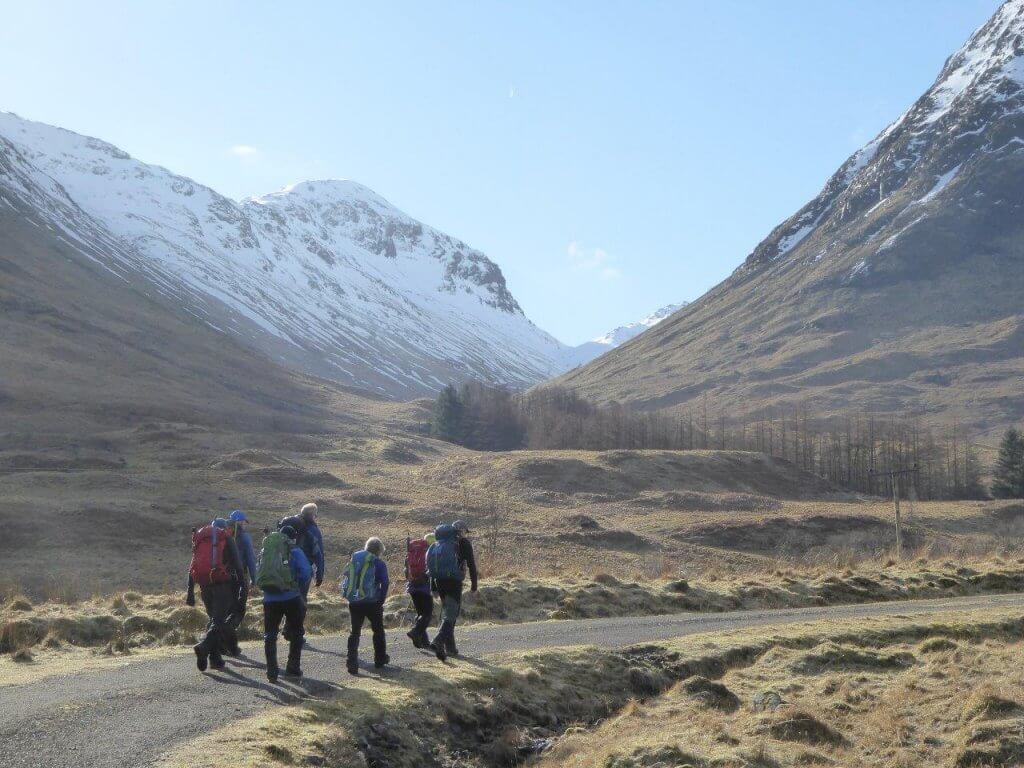
This photo was taken in Glencoe in March. This is when you can really enjoy hiking in the area. There is still snow on the ground, so it is not for the faint-hearted but there are no midges in Scotland and the air clarity is amazing. Perfect for photography.
We plan all our west coast walking holidays around both the best weather conditions and the height of the midge season. We rarely if ever, go to the west of Scotland between June and the end of August.
We have our home base in Boat of Garten in the Cairngorms National Park for a number of reasons. High on the list is the lack of midges, in general. On a still, damp morning/evening, you definitely become aware of their presence in season, but more often than not we rarely encounter them. They can be a bother in the Cairngorms, but the drier weather here and the sometimes windy conditions, keep the levels of midge down to manageable levels.
Midges in Scotland do love damp forest conditions though as the trees provide them with shelter from the wind and the sun, so be careful if you picnic in the woods.
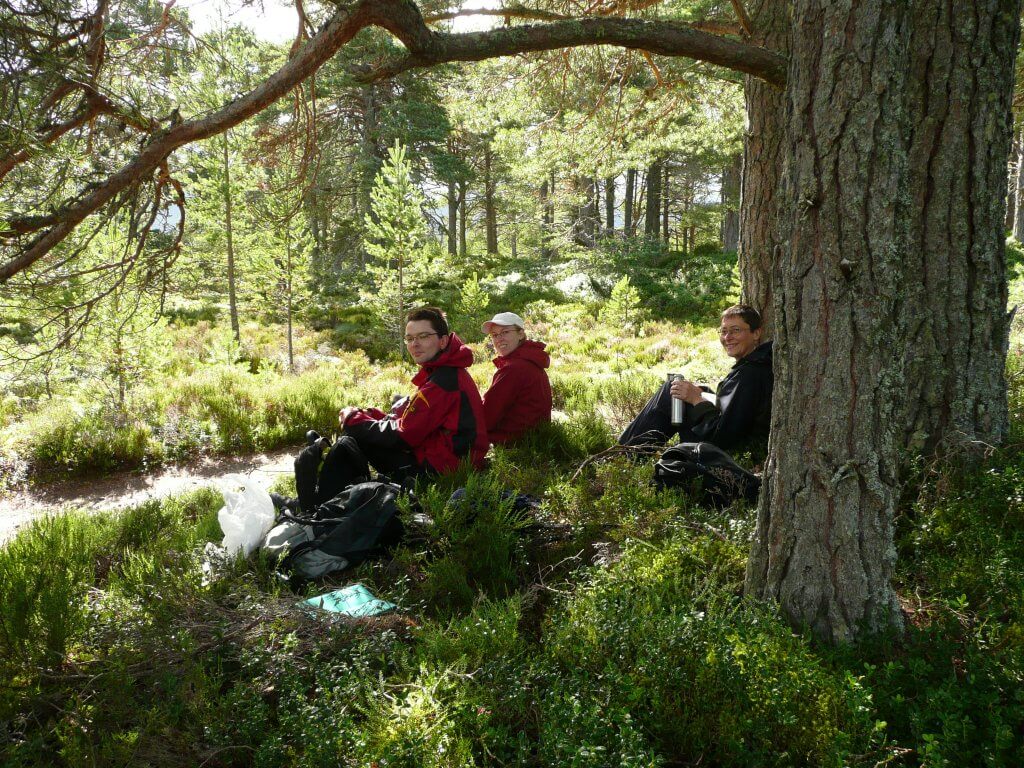
Relaxing in the shelter of the trees – beware the midges on a wind free day.
On still, damp days our best advice would be to engage in something high speed (eg mountain biking or road biking or zip lining) which will keep the midges away from you as you generate your own “wind” ie slip stream. You’ll be moving too fast for them to keep up.
Failing something high adrenaline you could just admire the scenery from the seclusion of your car, being sure to insulate yourself from the outdoors with your air conditioning system or alternatively indulge yourself in a bit of culture or city life for the day.
There are plenty of museums you can visit, even in the Highlands. Or try a castle or distillery.
We recommend the following distillery tours:
Tomatin (especially if you have under-18s in your party)
Glenlivet (regular tours which are translated into most major European languages)
Glenfarclas (a more unique and family atmosphere than other distilleries)
Aberlour (highly regarded and recommended to us)
Or try to Speyside Cooperage – a unique opportunity to see the traditional coopers at work making and refurbishing the casks which are a vital part of the whisky industry.
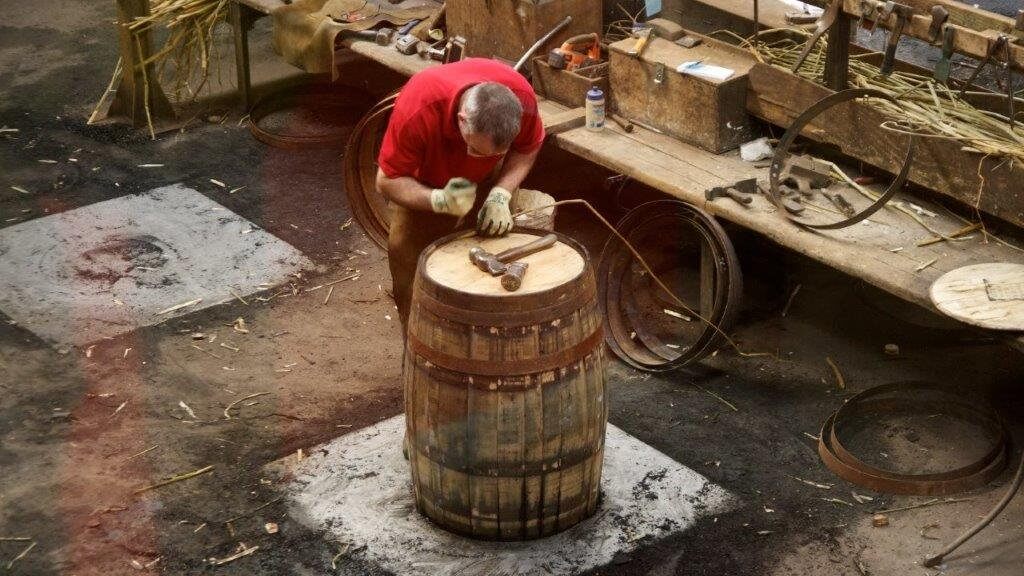
A cooper hard at work repairing casks at the Speyside Cooperage
Midges are so tiny that they can’t tolerate any more than a very light breeze. There is a fine balance in how much wind you can enjoy before it starts to affect your enjoyment of your day out, but hopefully you will find there is a strong enough breeze to keep the midges away, but not too strong to prevent you from enjoying your hike. The strength of wind you can tolerate yourself will depend on your experience and body mass. If the wind is starting to push you around, you’ll stop enjoying your day out and be concentrating too much on trying to maintain a straight line to your destination.
This is probably the hardest one to do if this is your dream vacation to Scotland. Almost everyone has at least one west coast destination on their itinerary, usually Skye. Stock up on plenty of repellent if you’re heading over between June and mid-September.
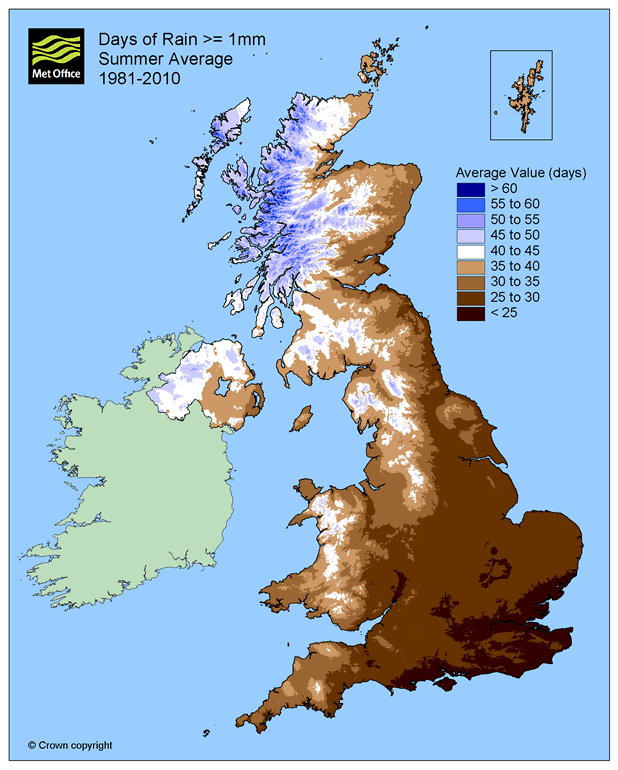
This is relatively easy advice to follow in early summer as dawn takes place so early and dusk so late, but by August it is worth being aware of the sunrise and sunset times.
If you’re planning an active vacation in Scotland, it’s worth checking out our programme as we have planned to include the best of the weather and the best of the midge free opportunities across the Highlands. We can also plan a tailor-made trip for you. If you base yourself with us we have good access to most other areas of the Highlands (except Skye and the Outer Hebrides) and can make the most of the best weather where ever it is.
Other precautions you can take:
For a light-hearted summary take a look at the video below:
There’s no getting away from the fact that if you visit Scotland in the summer you will quickly find out that there are midges in Scotland. If you go hiking in Canada and parts of the US, you need to carry bear spray with you. We don’t have any pests on the same scale as that, but you have no doubt heard about the Scottish midge. It seems to be a scary prospect for a large number of people intending to come and visit Scotland. They can be of plaque proportions sometimes but over here in the dry East of Scotland, we really don’t suffer from swarms of midges at all.
If you’re concerned about the prospect of midges bear the following tips in mind:
Midge facts from the makers of Smidge – a repellent which works.
2. Use repellent, naturally based if possible as deet is not kind to the skin. (A chemical which will melt a plastic bag is surely not designed to be used on the skin repeatedly over an extended period?)
3. Purchase a midge net
4. Use citronella, lavender or bog myrtle candles – preferably in a well-ventilated place or outdoors.
You’ll find that a midge bite from midges in Scotland is itchy and annoying but doesn’t have any long lasting effects. It won’t have any impact on your health long-term. The real pest to be wary of is the tick. I don’t hear anywhere near as much discussion about ticks from visitors planning to come to Scotland, but there is a risk that you should be aware of. Ticks don’t just bite dogs. They don’t just affect hill walkers – in fact, you can be at risk of a tick bite on a dog walk or playing golf.
Midge solutions
[amazon_link asins=’B01EJF6LAE,B00413715E,B002MDAOSQ,B06XKKS2JX’ template=’ProductCarousel’ store=’1603-8102-0783′ marketplace=’UK’ link_id=’1d95a286-6f07-11e8-889b-abcc7d60ddfc’]
Most of the west coast including Skye, Torridon and Arran.
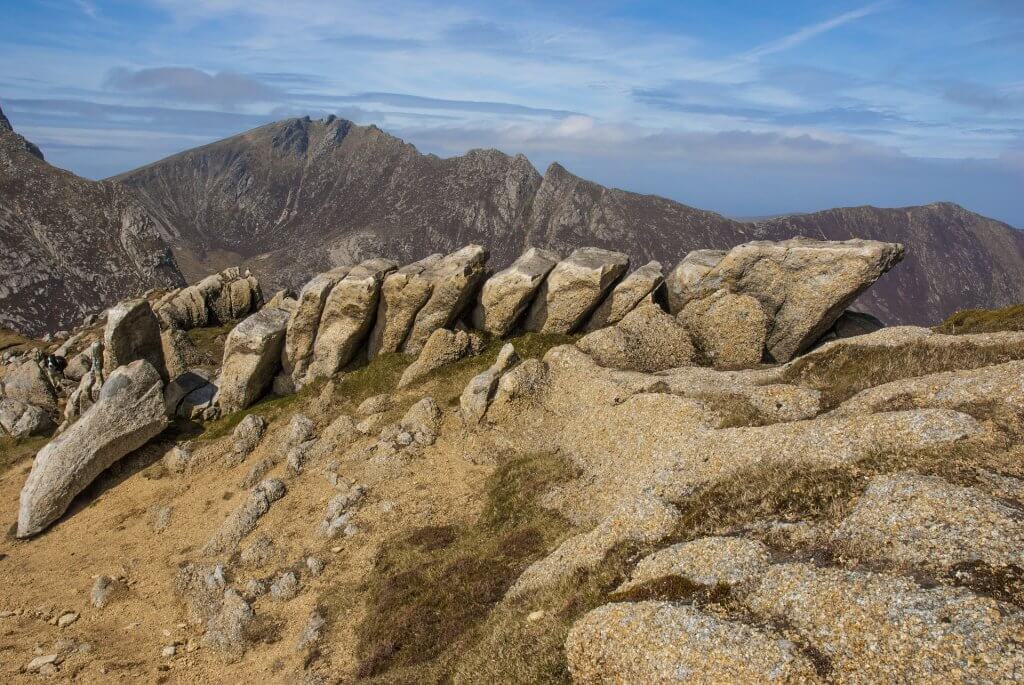
The peaks of Arran
We camped on Arran one year to check out some new routes we were planning to offer our clients. Found the perfect spot to wild camp, set up the tent, (nice breeze blowing all the while). Woke up, unzipped the tent and rapidly zipped it up again. At some point in the night, the breeze stopped and the midge clouds arrived.
You’re most at risk of tick bites if you venture off the main path and brush against any undergrowth as this is where the ticks like to hang out.
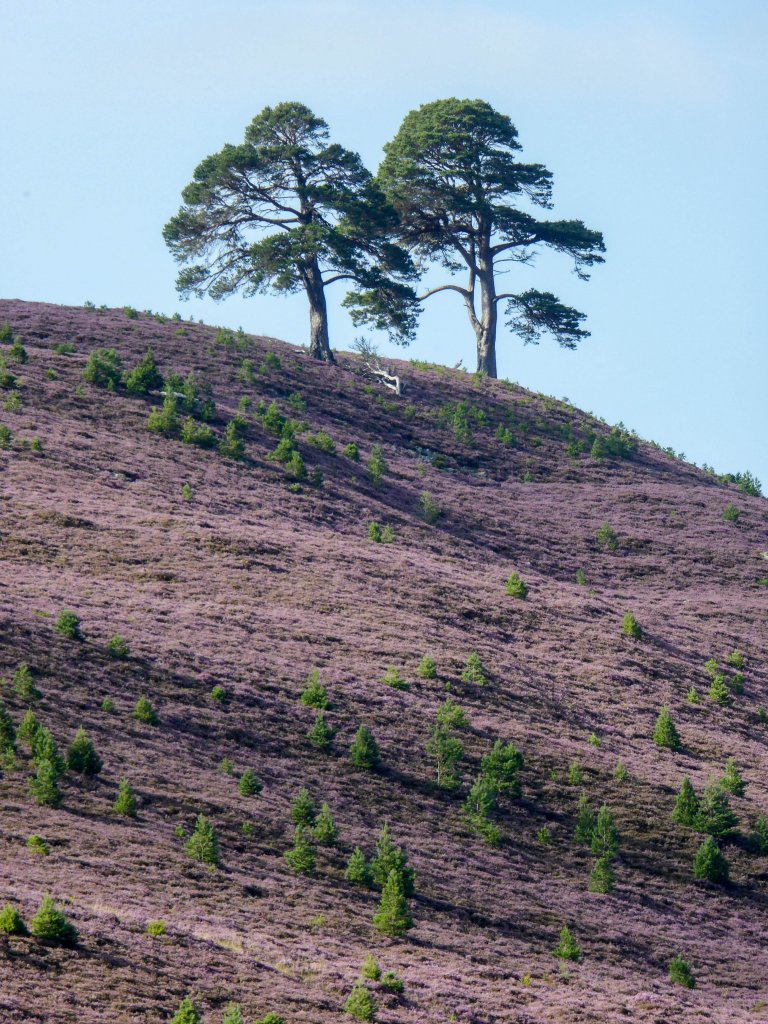
Most Scottish hill walkers are aware of the risk of Lyme disease and do check for ticks when they shower at the end of the day. Some of them can be so tiny that they are very difficult to spot. You pick them up from the undergrowth, just as dogs do. They can hang from the under side of ferns for years waiting for a host to come along. They don’t fly, but they will crawl on you until they find a spot they find warm and dark to attach to you. The most common places to find them are behind your knees, in your groin, or if you’re female, around your boobs.
A tick bite won’t be painful when it attaches to you and it will fall off on its own if left. Once it has finished it’s blood meal. However, it is definitely a good idea to remove it as soon as you can to reduce the risk of Lyme Disease.
Do not just pull a tick off if you find one attached to you. My personal early warning system is that I find a tick bite very itchy, worse (per bite) than a midge bite. If you just pull a tick you risk leaving it’s head attached to you. Also if you squeeze it while detaching it from you, you can force it to regurgitate it’s stomach contents into your bloodstream which will increase the risk of Lyme’s disease.
Tick twisters
[amazon_link asins=’B0037DD27U,B072JXRRBQ’ template=’ProductCarousel’ store=’1603-8102-0783′ marketplace=’UK’ link_id=’278ba43b-6f06-11e8-bce5-0727019eda1e’]
Tick lasso
[amazon_link asins=’B001QC34LS’ template=’ProductCarousel’ store=’1603-8102-0783′ marketplace=’UK’ link_id=’32301992-6f06-11e8-87f8-41d3dad923df’]
Tick map and predictions for the future
We rarely see swarms of midges on our guided hiking holidays.
There are midge hotspots in the Cairngorms, but it really is nothing like the west coast. Linn of Dee can be a wee bit midge infested if you’re hanging around before setting off into the Lairig Ghru, and if you’re at Corrour Bothy in the evening, you’ll possibly see a fair few – but we rarely have to put off our gardening. If we had more time to enjoy the garden we could without being bothered by midges.
All content © Copyright Scot Mountain Holidays 2026
Responsive web design by Summit Web Solutions